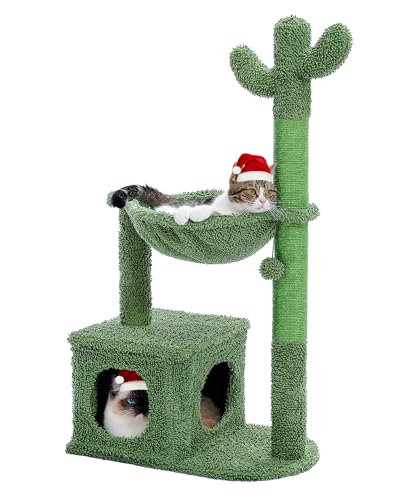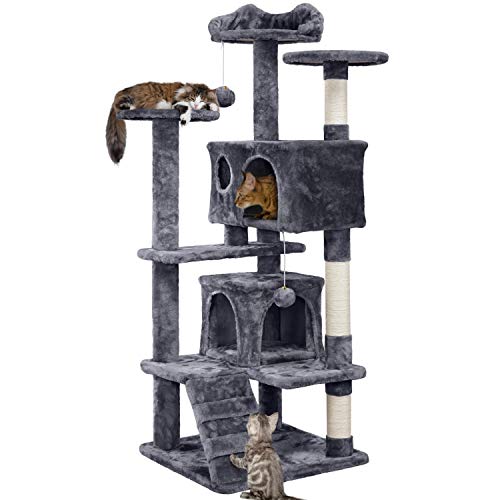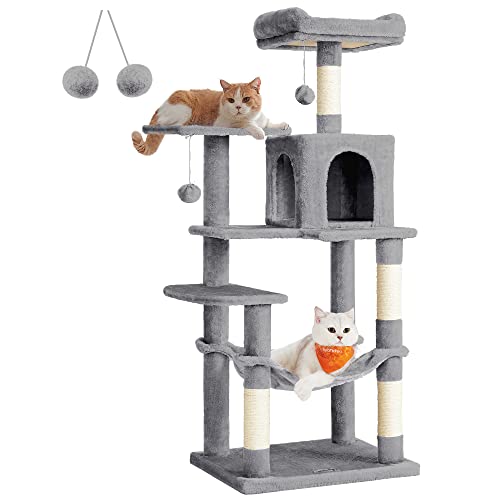The dream is idyllic: two cats curled together in a sunbeam, playfully batting at each other, grooming one another with gentle affection. The reality of bringing a new cat home, however, can sometimes feel a world away from this picture of feline harmony. Instead of cuddles and purrs, you might be met with hisses, growls, and the terrifying sound of catfights erupting in your living room. Thinking of expanding your feline family? The image of two cats curled up together is undeniably heartwarming, but the truth is, introducing a new cat can be a stressful time for everyone involved, humans and felines alike, especially if the process isn't managed with care and understanding.
One of the most crucial elements to understand from the outset is the vital importance of a gradual introduction. Imagine being a cat, perfectly content in your domain, and suddenly, a stranger is thrust into your space, smelling unfamiliar, acting in unpredictable ways. For cats, who are inherently territorial creatures, such a sudden intrusion can be deeply unsettling and even threatening. Rushing the introduction process is almost always a recipe for conflict, setting the stage for not just initial skirmishes, but potentially long-term stress and animosity between your feline companions. A slow, thoughtful, and carefully phased approach is not just recommended – it's absolutely key to preventing fights and fostering a peaceful coexistence, or even, dare we hope, genuine friendship.
With patience, understanding, and the right techniques, creating a harmonious multi-cat household is not just a whimsical dream, but a very achievable goal. This article is designed to be your comprehensive guide, walking you step-by-step through the process of introducing a new cat into your home while minimizing the risk of feline fights. We will explore the reasons behind cat conflict, lay out a clear plan for a gradual and successful introduction, and equip you with the knowledge and tools to navigate potential challenges along the way. The ultimate aim is to help you create a peaceful environment where all your feline companions can thrive, whether they become best friends, or simply respectful roommates sharing the same beloved home.
To truly understand how to avoid feline fights, it’s essential to delve into the underlying reasons why cats sometimes clash. Understanding feline behavior, particularly in a multi-cat context, is the first step towards a peaceful introduction. At the heart of most feline conflict lies territoriality. Cats are instinctively territorial animals, and their sense of territory is deeply ingrained. In the wild, a defined territory provides access to resources like food, water, and safe resting places. In our homes, while resources are readily provided, this instinct remains potent. For a resident cat, their home is their territory, and the arrival of a new cat is perceived as a potential intrusion into this established domain.
Scent communication is another fundamental aspect of feline interaction, and one that plays a massive role in introductions. Cats rely heavily on scent to understand their environment and communicate with each other. They mark their territory using scent glands in their cheeks, paws, and flanks, leaving olfactory messages that signal ownership and boundaries. A new cat brings with it a completely unfamiliar scent profile, a foreign language in the feline world. This unfamiliar scent can be perceived as challenging, threatening, or simply unsettling to a resident cat, triggering defensive or aggressive responses.
Resource competition, even in seemingly resource-abundant homes, is a potent driver of feline conflict. Cats can be surprisingly competitive over a range of resources, far beyond just food and water. Litter boxes, scratching posts, prime sleeping spots, sunny window perches, even human attention, are all resources that cats may feel the need to compete for. Introducing a new cat inherently increases the potential for competition over these perceived valuable assets. Even if you believe you have plenty to go around, a cat’s perception of scarcity, or the potential for scarcity, can be enough to spark conflict.
While less overtly structured than some animal societies, cats do establish subtle social hierarchies within multi-cat households. These hierarchies are often fluid and based on individual personality and resource access, but they exist nonetheless. Introducing a new cat can disrupt this existing social dynamic, potentially leading to power struggles as cats attempt to re-establish or redefine their positions within the household’s feline social structure. This jostling for position can sometimes manifest as aggression, particularly during the initial introduction phase.
Ultimately, it’s crucial to remember that feline aggression during introductions usually stems from fear and stress, not simply inherent meanness or a desire to dominate. While some cats are certainly more assertive than others, most inter-cat aggression in this context is rooted in defensiveness. When a cat hisses, swats, or fights, it is often a reaction born of fear, anxiety, and a feeling of being threatened or overwhelmed by the sudden presence of an unfamiliar animal in their territory. Understanding that fights are often defensive reactions rather than malicious attacks allows us to approach introductions with more empathy and focus on creating a safe and reassuring environment for all cats involved.
Before you even bring your new feline friend home, there’s crucial groundwork to lay that significantly increases the chances of a peaceful introduction. The pre-introduction phase is all about setting the stage for success, both in terms of choosing the right new cat and preparing your home environment. Choosing the right new cat is not about finding a perfect match guaranteed to become instant best friends, but rather making thoughtful considerations about compatibility to minimize potential conflict.
Age is a key factor. Generally, kittens are often easier to integrate into a household with adult cats. Kittens are less of a perceived territorial threat and their playful, less assertive nature is often less intimidating. However, adult-to-adult cat introductions are extremely common and can be successful with patience. Consider energy levels – matching a very high-energy kitten with a senior, low-energy cat might create imbalances and stress, whereas pairing similar energy levels might be more harmonious. Personality matching is arguably even more important than age. Think about the personality of your resident cat – are they calm and confident, playful and outgoing, or more timid and reserved? When choosing a new cat, try to select one with a personality that is likely to complement, or at least not clash dramatically, with your resident cat. A very dominant and assertive cat paired with another equally dominant cat could be a recipe for ongoing power struggles, while a calm and confident cat paired with a playful one might find a more balanced dynamic.
While sex is often less critical than personality, spayed or neutered status is absolutely essential for both your resident cat and your new arrival. Un-neutered cats are far more likely to exhibit territorial aggression and fighting. While personality correlations with sex are less definitive, some generalizations exist – for example, some find introducing female cats to each other can be more challenging than introducing males, while others find the opposite. Focus on individual personality first. Health is paramount. Ensure both your resident cat and the new cat are healthy and up-to-date on vaccinations before the introduction process begins. Ideally, quarantine the new cat in their designated "safe room" for an initial period not only for health monitoring, but also to allow them to de-stress from travel and adapt to the new environment before the complexities of meeting a resident cat are introduced.
Consider the source of your new cat. Shelters and rescue organizations often have behavioral assessments available for their cats, which can provide valuable insights into their personality and social compatibility. Breeders, if you are considering a purebred, can also offer information about breed-specific temperaments. If you are taking in a stray cat, their history is likely unknown, so extra caution and patience may be required during introductions.
Preparing your home environment for a multi-cat household, even before the new cat arrives, is vital. Resource management is absolutely crucial in preventing competition and minimizing conflict triggers. Multiple food and water stations are essential. Have more than one of each, ideally in different locations, and on different levels if possible. This provides choice and reduces the feeling of having to compete for access. The rule of thumb for litter boxes is often “number of cats plus one.” Scatter them in various locations throughout the house, in quiet, accessible areas. Consider offering different types of litter boxes and litter types to cater to individual cat preferences.
Scratching posts and cat trees are not just furniture; they are essential resources for cats, serving as outlets for scratching behavior and territorial marking. Provide ample scratching opportunities in different areas of your home, both vertical posts and horizontal scratchers. Vertical space, provided by cat trees, shelves, and window perches, is invaluable in multi-cat homes. Cats appreciate having elevated vantage points, which provide escape routes, allow them to observe their environment from a safe distance, and reduce the feeling of being trapped or overwhelmed.
Safe spaces and hiding places are absolutely non-negotiable for a successful introduction and a harmonious multi-cat household long-term. Provide boxes, tunnels, covered beds, and quiet rooms where each cat can retreat and de-stress. These safe havens offer a sense of security, allow cats to take breaks from social interaction, and reduce feelings of being constantly exposed or vulnerable. Consider using feline pheromone diffusers, such as Feliway or Comfort Zone, in your home before the new cat arrives. These diffusers release synthetic feline facial pheromones, which can create a calming atmosphere, reduce overall stress levels, and help prepare the environment for a smoother introduction.
The gradual introduction process itself is a carefully orchestrated dance, broken down into distinct steps, each building upon the last. Patience is paramount; rushing any stage can easily derail the entire process. Step one is initial separation, often referred to as the "safe room" phase. Before you even bring the new cat into the house, designate a "safe room." This room will be the new cat's sanctuary, their private haven initially. This room needs to be fully equipped with all necessary resources – food, water, a litter box, a comfortable bed, toys, and a scratching post. Think of it as their fully self-contained apartment within your home.
Crucially, keep the door to the safe room strictly closed at all times during this initial separation phase. No visual or physical contact between the new cat and resident cat(s) is permitted yet. The focus at this stage is entirely on scent exchange. Allow the new cat ample time to acclimate to their safe room. They have just experienced the stress of travel and a completely new environment. This safe room period allows them to de-stress, adjust to the sights, sounds, and smells of your home in a secure and controlled environment, without the added pressure of immediately meeting the resident cat(s). This acclimation period can last for several days, and in some cases, even a week or more, depending on the individual cat’s personality and stress levels. During this safe room phase, it’s vital to maintain your resident cat’s routine as normally as possible. Minimize changes to their feeding schedule, playtime, and affection routines. This helps reduce their stress and prevents them from feeling displaced or neglected by the arrival of the new cat.
Step two is all about scent swapping – letting the cats get acquainted with each other’s scent before any face-to-face meetings. Remember, scent is the primary language of cats. This stage is absolutely vital for setting the foundation for a positive introduction. Begin by swapping bedding or blankets between the new cat's safe room and the resident cat's area. This allows each cat to become familiar with the other's scent in a non-threatening way. Use scent cloths or towels. Gently rub a soft cloth or towel on each cat, focusing on their cheeks and flanks, where scent glands are concentrated. Then, swap the cloths, placing the cloth rubbed on the new cat into the resident cat’s area, and vice versa. This direct scent exchange further familiarizes them with each other’s unique olfactory signatures.
Start feeding both cats on opposite sides of the closed door of the safe room. This is a clever way to create positive associations with each other's scent. Food equals good. Begin with the food bowls positioned a reasonable distance from the door, and gradually move them closer to the door over time, only as long as both cats remain calm and relaxed while eating. Use wand toys to play with each cat near the door, but again, without visual contact. This continues to build positive associations with the scent and presence of the other cat.
Step three initiates supervised visual introductions, short and sweet, and always under your controlled supervision. This is their first chance to actually see each other, but still with a barrier in place. Create controlled visual access without allowing physical contact. One method is to slightly crack the safe room door, just enough for them to see each other through the gap, but not wide enough for them to get in or out. These visual sessions must be closely supervised. Another option is to briefly place the new cat in a pet carrier or crate within the resident cat’s usual space (or vice versa), again for short periods and always under your direct supervision. A screen door or baby gate installed at the safe room doorway creates a more robust physical barrier, allowing visual, olfactory, and auditory access, but preventing any physical interaction.
Keep initial visual sessions extremely short, just a few minutes at first. It's better to end the session before any signs of stress or tension arise. Aim for calm and curious behavior during these visual encounters. Use positive reinforcement during visual introductions. Talk to both cats calmly and reassuringly. If they are calm enough to accept them, offer treats to both cats while they can see each other, further reinforcing positive associations with the other cat's presence. Observe body language meticulously during these visual sessions in both cats. Look for positive or neutral signs: relaxed posture, slow blinks, ears facing forward, curious but not tense. Also, be acutely aware of stress or anxiety signals: hissing, growling, dilated pupils, flattened ears, twitching tail, piloerection (raised fur), tense posture, staring intensely. If you observe any stress signals, immediately separate the cats and slow down the introduction process.
Step four involves gradually increasing interaction time and space, slowly expanding shared territory. As long as visual sessions remain consistently calm and positive (or at least neutral), slowly increase the duration of these visual encounters. Once visual introductions are reliably calm, you might consider allowing very brief, highly supervised explorations. For example, when the resident cat is safely contained in another room, allow the new cat to briefly explore a small portion of the resident cat’s territory, and vice versa. This step should be approached with caution and only when all previous stages have been consistently positive. If all continues to progress well with scent and visual exchanges, you can begin allowing supervised access to a larger shared space. Start with very short periods, perhaps just a few minutes initially, and gradually lengthen the shared time, always remaining closely present to intervene if needed. Even as interactions become more frequent and seemingly positive, continue to supervise all interactions for a considerable time, especially in the beginning. Be prepared to separate them instantly if any tension begins to escalate.
Step five is living together, the ongoing management and monitoring phase. Even if initial interactions seem promising, resist the urge to rush full integration too quickly. Continue the gradual integration approach over days, weeks, or even months, depending on the individual personalities of your cats and how they are progressing. Crucially, maintain separate resources even after the cats appear to be living together harmoniously. Continue providing multiple food and water stations, litter boxes, scratching posts, and safe spaces throughout your home long-term. This proactive resource management helps prevent resource guarding triggers from developing down the line. Continue to observe their interactions even when they seem fully integrated. Be alert to any subtle signs of stress, bullying behavior, or resource guarding that might emerge over time.
Continue to use positive reinforcement occasionally. If you observe the cats in the same space and behaving calmly, offer treats to both of them simultaneously, further strengthening positive associations with shared space and each other's presence. It’s important to understand the difference between necessary intervention and letting cats "work it out." Know when to step in and separate cats to prevent escalation of hissing, growling, chasing, or fighting. However, don't intervene in very mild, brief hisses or swats if they are clearly not escalating into a full-blown fight and appear to be part of cats establishing their boundaries and communication.
Despite your best efforts, sometimes fights can still occur. If a fight erupts, immediate separation is key. Stay calm yourself. Quickly and calmly separate the cats. The safest method is to use a large blanket or a piece of sturdy cardboard to gently break up the fight. Avoid putting your hands directly into the middle of a catfight, as you are likely to get injured. After a fight, re-evaluate the introduction process. A fight is a clear signal that you have progressed too quickly. It's time to backtrack several steps in the introduction process. Return to a stronger emphasis on scent swapping and very brief, controlled visual introductions through a solid barrier. Ensure safe spaces remain readily available for both cats, and that they are truly secure retreats where each cat can de-stress and recover after a conflict. Consider increasing or initiating the use of pheromone diffusers to help reduce overall stress levels in the home environment.
If aggressive behavior seems sudden, uncharacteristic, or particularly intense, have both your resident cat and the new cat examined by a veterinarian to rule out any underlying medical conditions that could be causing pain, discomfort, or irritability, and contributing to aggressive behaviors. If problems persist, fights become frequent or serious, or you feel overwhelmed, don't hesitate to seek professional help from a veterinarian experienced in feline behavior, or a certified feline behaviorist. They can provide tailored advice specific to your cats’ personalities and your home environment, and help you navigate more complex introduction challenges.
Introducing cats is undeniably a marathon, not a sprint. Successful integrations are rarely instantaneous and require patience, careful observation, and a commitment to a gradual, step-by-step approach. Rushing the process is almost always counterproductive and can set back progress significantly. However, the rewards of a harmonious multi-cat household are immense. When feline peace is achieved, the benefits are multifaceted. Cats can provide companionship for each other, reducing loneliness and boredom, and enriching the lives of both your feline companions and your entire household. By understanding feline behavior, diligently preparing your home environment, and methodically following a gradual introduction process, you can dramatically increase your chances of creating a peaceful, loving, and enriching environment for all your feline companions. Remember, with patience, understanding, and a proactive approach, a harmonious multi-cat home is not just a dream, but a very real and attainable goal.







